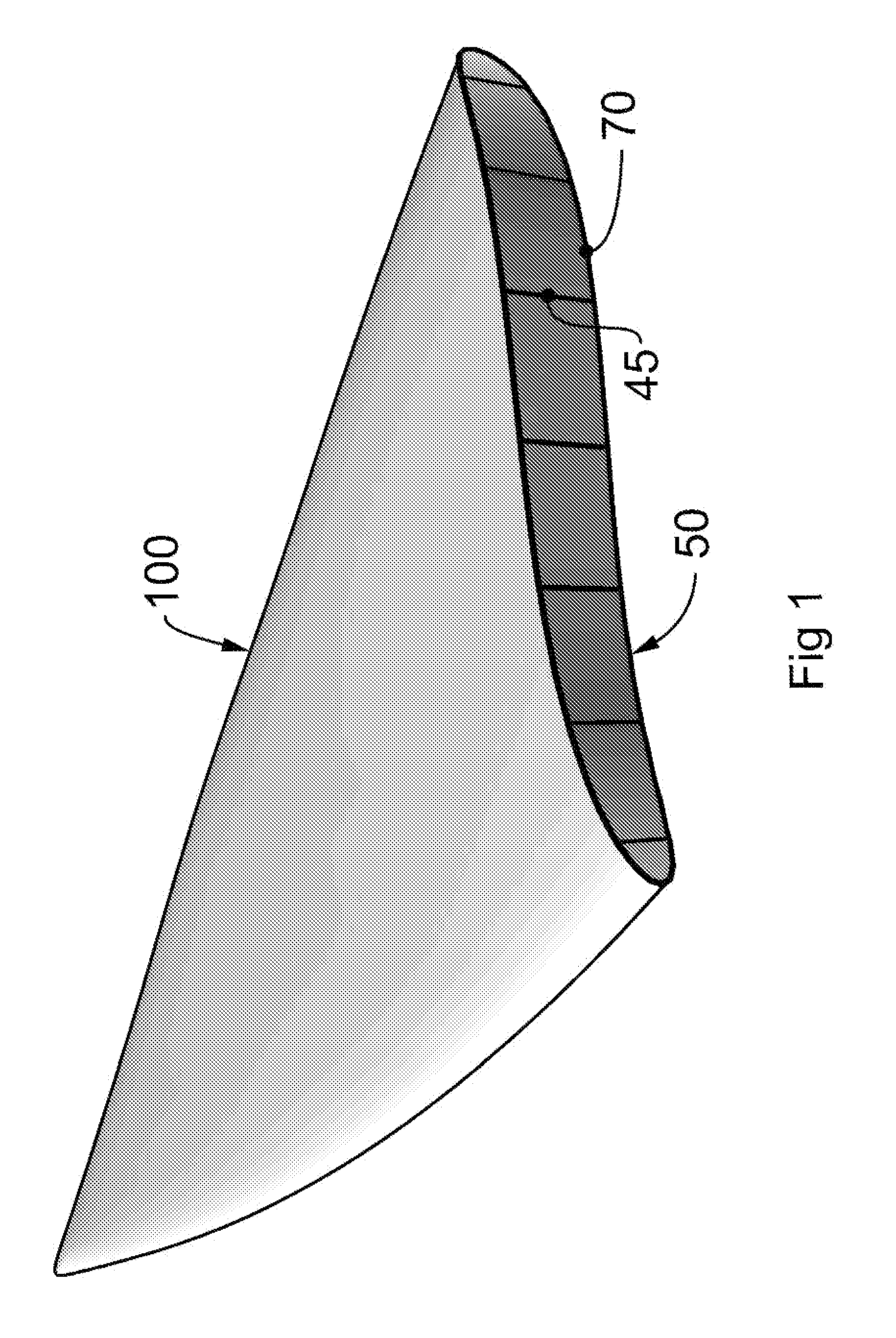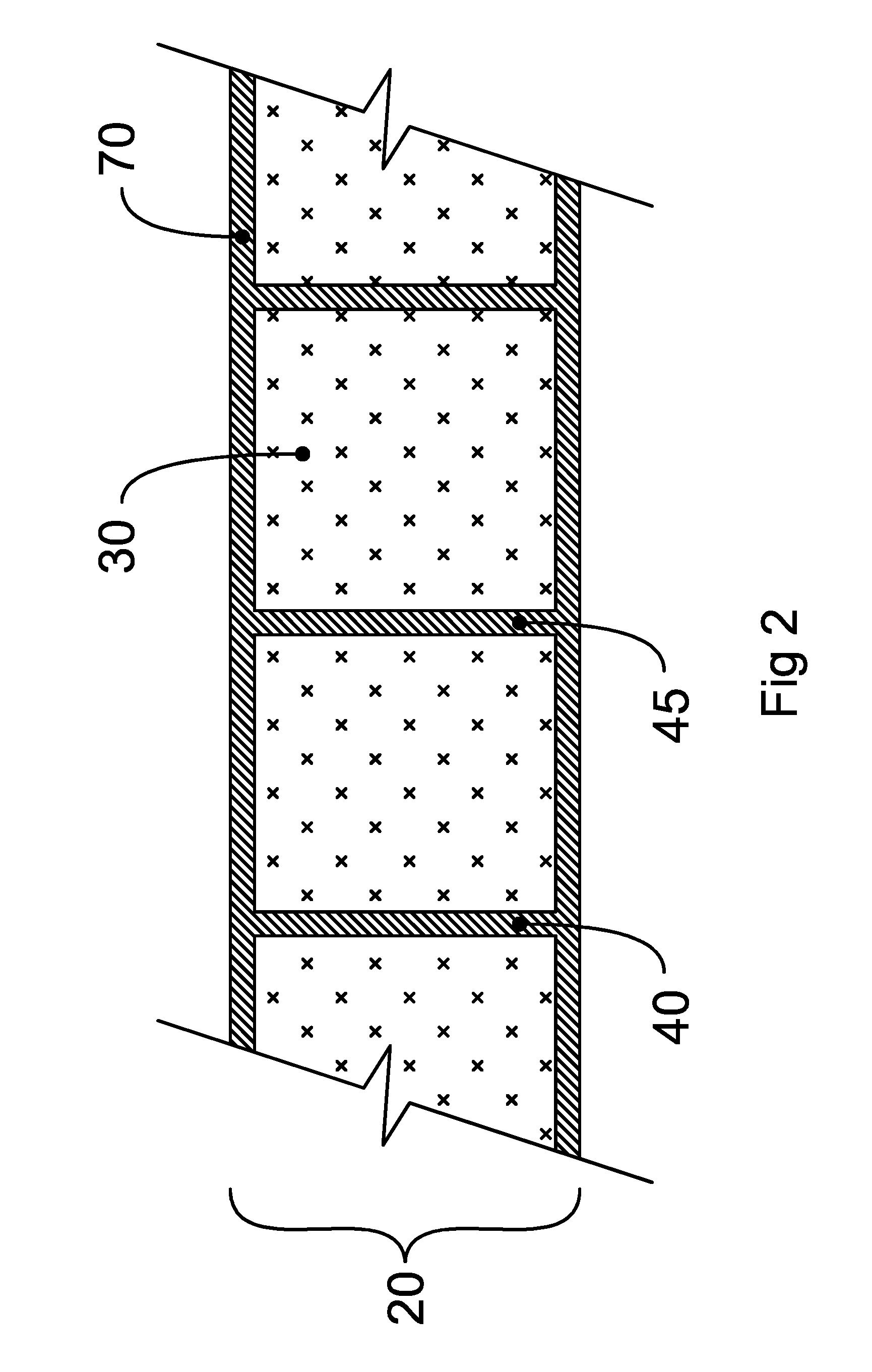Method of making a 3D object from composite material
a composite material and object technology, applied in the field of 3d objects made of composite materials, can solve the problems of adding to costs and not entirely satisfying the production of a new mould, and achieve the effect of light weigh
- Summary
- Abstract
- Description
- Claims
- Application Information
AI Technical Summary
Benefits of technology
Problems solved by technology
Method used
Image
Examples
example 1
Production of a Complex 3D Object
[0060]A complex 3D object may be produced by the following steps:
[0061]Step 1.
[0062]An object is designed creating a plan in 3 dimensions which plan is divided into multiple sections by strategically spaced planes so as to provide a series of sectional profiles of the 3 dimensional form. The 3 dimensional form is conveniently designed with CAD or CAM computer software. Utilizing the facilities available in the software application, an array of planes can easily be generated and the profiles exported to individual files and / or defined as individual objects. These objects or files could be 2 dimensional or 3 dimensional depending on the type of machine cutting process to be employed in step 3.
[0063]During the CAD / CAM design process allowance may be provided to ensure proper alignment of each section which is carried out in step 4. This is achieved by allocating matching drill points for each adjacent profile section. During step 3, the cutting process,...
example 2
Production of Trimaran Hull
[0080]Boat hull external and internal surfaces for a 14 foot trimaran were designed by CAD utilizing Rhinoceros (Rhino). This is a stand-alone, NURBS-based 3-D modeling software, developed by Robert McNeel & Associates. These external and internal surfaces were notionally sliced into 26 mm thick “sections” and parts for CNC machining were developed from these sections along with drill points for locating pegs for each part ensuring properly positioned assembly of parts. Each part was exported to its own separate DXF file. There were 922 parts for this 14′ hull.
[0081]Polyurethane core material by the trade name Divinycell® (DIAB) was used for the core or substrate material of the trimaran hull. Divinycell® is relatively expensive but rated for marine applications. The most common size sheeting is 8×4′ and 1″ thickness and 60 kg / m3 density was used for this project.
[0082]Fiber glass was used as the structural material for forming the laminated faces and surf...
example 3
Testing of Material
[0099]Test beam samples were manufactured consistent with the method of the invention. The test beams consisted of 100 mm wide beams with webs and surfaces of 3ply 8 oz epoxy fibreglass and 60 kg / m3 polyurethane foam. Beam thickness was 28 mm and webs where spaced almost symmetrically at 26 mm longitudinally, 4 webs per beam. Other test beam samples were manufactured without webs in a standard sandwich composite configuration. These beams were also 100 mm wide and also used 3ply 8 oz epoxy fibreglass on upper and lower surfaces. 3 different thickness beams were manufactured, with 60 kg / m3 density foam core of 1.0″, 1.5″ and 2.0″ resulting in beam thicknesses of 27.5 mm, 40.5 mm and 53 mm respectively. Testing was carried out using a single point load by way of steel bar radius 30 mm contacting beam surface perpendicular to beam length. The 3 standard beams and the webbed beam were each tested while centred on supports 300 mm apart and the point load applied to bea...
PUM
| Property | Measurement | Unit |
|---|---|---|
| thick | aaaaa | aaaaa |
| density | aaaaa | aaaaa |
| weight | aaaaa | aaaaa |
Abstract
Description
Claims
Application Information
 Login to View More
Login to View More - R&D
- Intellectual Property
- Life Sciences
- Materials
- Tech Scout
- Unparalleled Data Quality
- Higher Quality Content
- 60% Fewer Hallucinations
Browse by: Latest US Patents, China's latest patents, Technical Efficacy Thesaurus, Application Domain, Technology Topic, Popular Technical Reports.
© 2025 PatSnap. All rights reserved.Legal|Privacy policy|Modern Slavery Act Transparency Statement|Sitemap|About US| Contact US: help@patsnap.com



